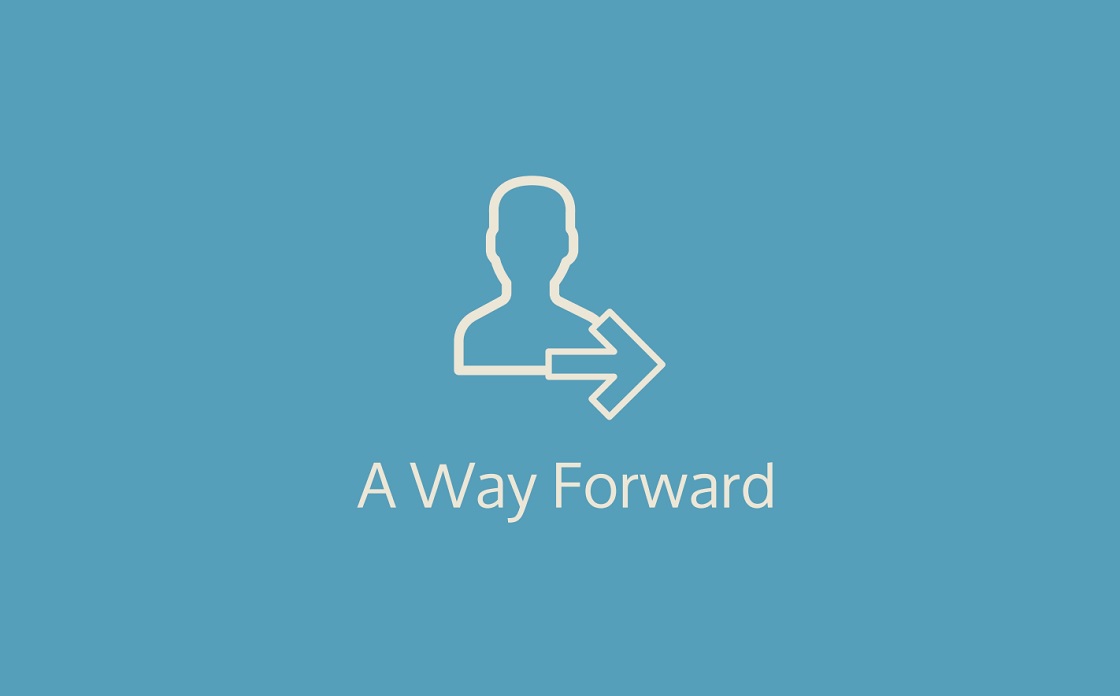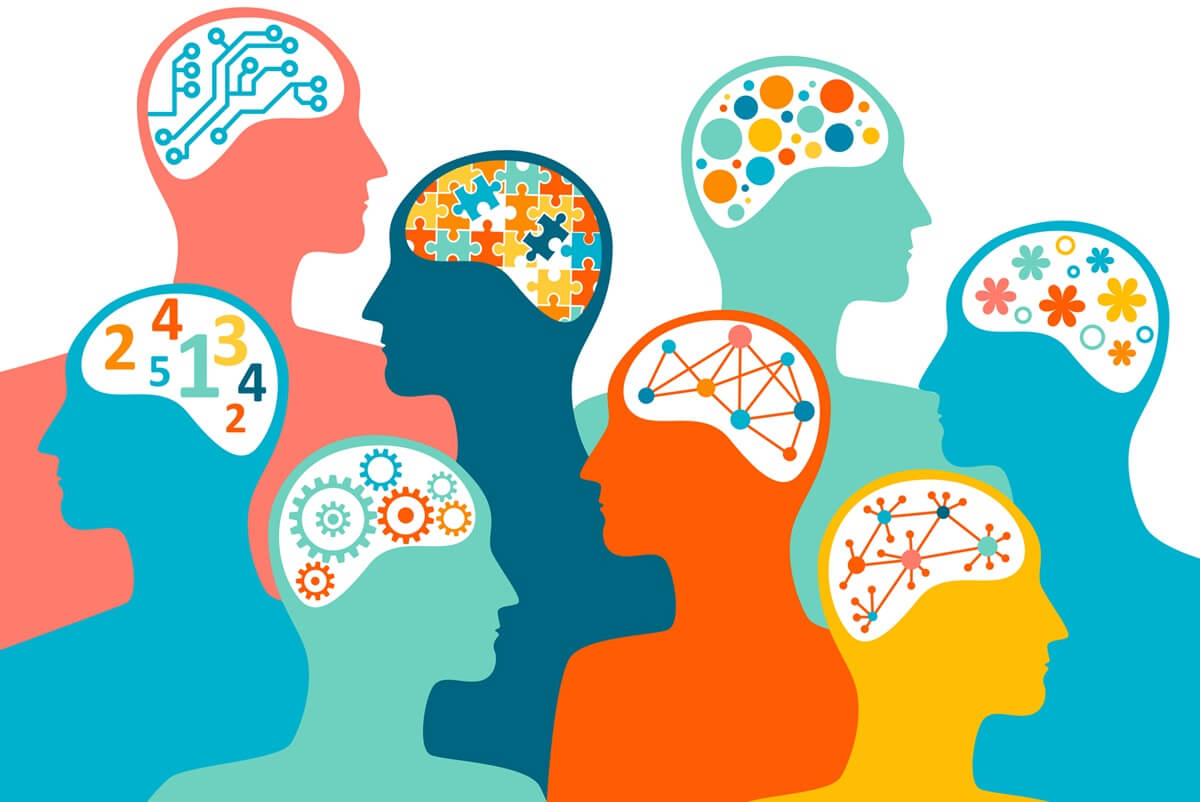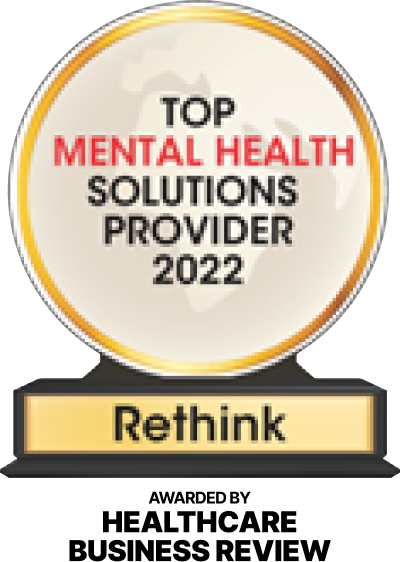According to The Mindfulness Initiative, a UK research group, the body of research-based evidence that mindfulness contributes to a richer, fuller life and greater business success is growing quickly. Here are 6 of our favorite ways for you to unlock your best self:
1. Relationships
How team members feel about their co-workers and managers can impact how effectively a team accomplishes tasks. Positive relationships help create productive teams, ultimately affecting a company’s bottom line. Successful team member relationships often extend beyond the workplace and into the personal lives of the workers.
To date, 45 workplace mindfulness research studies have linked mindfulness to improved relationships at work, supporting collaboration and improving employees’ resilience in the face of challenges. 22 23 The studies included employees from a wide range of sectors.
Outside of the workplace, mindfulness training has been shown to make practitioners more likely to respond compassionately to someone in need24, and enjoy more satisfying personal relationships.25
2. Improving Collaboration
Research has shown that happy, engaged knowledge workers tend to be more productive, creative and learn better.28 Engaged, happy people tend to collaborate better, thus driving productivity. A recent two-year research project by Google (Project Aristotle) found that the key drivers of a team’s performance are trust and psychological safety.29 This is complemented by work done at the MIT Social Media lab, which clearly demonstrates that the ability to listen, diversity of views and equality of turn-taking are among the crucial drivers of collective intelligence and team performance.30
3. Performance
A recent review of the scientific literature on workplace mindfulness training31 concluded that training was positively related to key aspects of performance at work including job and task performance, citizenship and safety performance. Between 2005 and 2015,38 research studies explored the impact of mindfulness on aspects of workplace productivity. The studies involved staff from armed services, call centers, healthcare, high-tech, manufacturing, social work, teaching and utility companies.
4. Leadership
Several recent studies32 33 34 indicate that leaders need particular capacities for working effectively in the 21st century – and there is broad agreement that resilience, collaboration and decision-making are vital. Less clear is how leaders might develop these capacities effectively. Mindfulness-based leadership development programs, which combine leadership education with the development of mindful awareness, offer one approach.
A particularly important rationale for training leaders centers on the development of ‘metacognition’ – that is, the ability to observe one’s thoughts, feelings, sensations and impulses as they are being experienced, and to see them as mental events rather than the ‘reality’ or ‘truth’ of the situation. In short, mindfulness practice provides leaders with the capacity to notice their thoughts and intuitions with some perspective and as such have more freedom to choose informed responses over automatic reactions.
A 2012 study35 measured the influence of leaders’ mindfulness on employee wellbeing and performance. 96 supervisors and their subordinates participated voluntarily as part of a larger study involving additional measures. The report concluded that supervisor mindfulness reduced employee emotional exhaustion and increased employee work–life balance. It improved employee performance and staff engagement. Supervisor mindfulness was positively related to employee job satisfaction and psychological need satisfaction. Furthermore, leader mindfulness was positively related to overall job performance, as well as in-role performance and organizational citizenship behaviors. The results suggest a potentially important role of leading mindfully in organizations.13
“Mindfulness is not a ‘silver bullet’ solution as many books and courses would have one believe. Seen in context as a gradual increase in awareness of these aspects in one’s life, it is essential and a great help in interacting with collaborators, managing a team, decision making and putting things in perspective”- Ashridge Mindful Leader Eight Week Program participant.
Research finds that mindful leaders appear to express their commitment to mindfulness and its impact on their leadership style in at least three distinctive ways:
- Informal mindfulness practice becomes more important over time: “My questions are different and the way I listen to the answers has changed. I now really want to hear what people say.” (Program participant)
- They are more willing to stay put in the face of difficulty: “I breathe and think about how to move forward constructively rather than brooding on what I should have done.” (Program participant)
- They proactively promote emergent, bottom-up decisions: “Now I make sure the real experts have a voice on decisions.” (Program participant)14
5. Decision-making
An increasing number of organizations, particularly those involved in behavior change or high-risk activities, are incorporating ‘behavioral insights’ in their working practices. These insights from the field of psychology have been popularized in books like Nudge37 , Thinking, Fast and Slow38 and The Economist Guide to Decision Making39 . Both mindfulness training and behavioral insights are concerned with how we, as humans, attend to and process information and how this affects our behavior. They are also both interested in the role of the automatic mind and emotions in our decision-making. The combination of behavioral insights with the inquiry and present moment awareness offered by mindfulness could be a powerful tool to support better decision-making.
Though the science is still in its infancy, promising research includes a trial showing that mindfulness reduces the ‘sunk-cost bias’ (our tendency to carry on with something because we have already invested so much time or money into it, even though it may no longer be the best thing to do)40 and could improve the information-gathering processes required for decision making.41
A 2015 review by Good, Liddy et al.42 suggests that mindfulness training could improve our ‘rationality’ by developing our attentional capacity: making us more likely to see what is in front of us without being distracted by past experiences or long-held beliefs. Another academic literature review43 suggests that mindfulness training could have several positive effects on decision-making including; improving the quality of information considered in decisions, recognizing ethical challenges, reducing our tendency to seek and trust patterns and reducing confirmation bias (our tendency to look for evidence to support what we already believe).
6. Creativity and Innovation
Creativity is not only for the invention of new products and services: it can be crucial to individual performance, problem-solving and the development of more efficient processes and management techniques. How companies think creatively is one of the most significant areas of inquiry in business.45 Recent research into problem-solving concluded that there is a “direct relation between mindfulness and creativity”.46
The mindful brain and creativity Research in this area is still in the early stages, but it is possible to draw parallels between the impact of mindfulness on the brain and effective creative functioning. MRI scans after an eight-week course of mindfulness practice appear to show shrinking of the amygdala – the brain’s “fight or flight” center. This primal region of the brain, associated47 with fear and emotion, is involved in the initiation of the body’s response to stress.
A stressed mind shuts down possibilities.48 This perhaps is a reason why creative companies strive to create office environments in which creative people can free themselves from mundane pressures and engage more ably in states of play.49
Mindfulness could help individuals boost creativity in several ways:
- Focus – mindfulness practice results in an improved ability to focus and filter out other mental processes and external distractions during creative tasks.
- Idea generation – In one study scientists reported that “open-monitoring” meditation (non-reactive observation of your thoughts over time) promoted “divergent thinking” a type of thinking that allows new ideas to be generated.50
- Flexible thinking – Mindfulness reduces cognitive rigidity (the tendency to be blinded by experience). Instead, it increases the capacity to respond in novel and adaptive ways to a particular problem. Mindfulness deliberately disrupts and erodes our habitual patterns of responding, leaving us receptive to new ideas and ways of thinking.51
Mindfulness in creative companies A number of well-known creative and innovation-based companies have implemented mindfulness programs to promote creativity and innovation. These organizations include Apple, Google, McKinsey & Company, Procter & Gamble, General Mills, Target, and Lululemon.16
In various studies, participants reported greater focus and the ability to be more open-minded – two key ingredients of creativity. These results confirmed the researcher’s hypothesis that mindfulness increases working memory capacity and by proxy that employees would feel an uplift in both their creativity (better ideas) and their productivity (more ideas). Data also demonstrated that mindfulness training increased employee’s overall positivity.
During and following training, employees reported that they felt less stressed, happier, and able to have fresh ideas more quickly and easily. They also felt more focused on developing and delivering new ideas.
If these 6 ways to show up as your best self aren’t enough, there have been over 4,500 clinical research studies that correlate mindfulness training with improved wellbeing, mental health and sustainable performance. Our hope is that you can keep going with your own research study of one – YOU!
About the Author: This excerpt was edited and reprinted with the permission of our friends at The Mindfulness Initiative. To learn more about their work, please visit www.themindfulnessinitiative.org.
Find the original work here.
View References
11 Davies SC. Annual Report of the Chief Medical O cer 2013, Public Mental Health Priorities: Investing in the Evidence. London: Department of Health; 2014.
12 Bond, S & Shapiro, G. (2014) Tough at the Top? New Rules for Resilience for Women’s Leadership Success
13 Chiesa A, Serretti A. Mindfulness-Based Stress Reduction for stress management in healthy people: A review and metaanalysis. Journal of Alternative Complementary Medicine. 2009;15:593–600. Jain S, Shapiro SL, Swanick S, Roesch SC, Mills PJ, Bell I, Schwartz GE. A randomized controlled trial of mindfulness meditation versus relaxation training: Effects on distress, positive states of mind, rumination, and distraction. Annals of Behavioral Medicine. 2007;33:11–21. Pidgeon AM, Ford L, Klaassen F. Evaluating the effectiveness of enhancing resilience in human service professionals using a retreat-based mindfulness with Metta Training Program: A randomised control trial. Psychology, Health and Medicine. 2014;19:355–64. Manotas M, Segura C, Eraso M, Oggins J, McGovern K. Association of brief mindfulness training with reductions in perceived stress and distress in Colombian health care professionals. International Journal of Stress Management. 2014;21:207–225.
14 Jha AP, Stanley EA, Kiyonaga A, Wong L, Gelfand L. Examining the protective effects of mindfulness training on working memory and affective experience. Emotion. 2010;10(1):54–64. Zeidan F, Johnson SK, Diamond BJ, David Z, Goolkasian P. Mindfulness meditation improves cognition: evidence of brief mental training. Consciousness and Cognition. 2010; 19(2):597-605. Mrazek MD, Franklin MS, Phillips DT, Baird B, Schoole JW. Mindfulness training improves working memory capacity and GRE performance while reducing mind wandering. Psychological Science. 2013;24(5):776-781.
22 Gathering the evidence base for mindfulness at work: scientifically evaluated and academic research (2016). Retrieved from http://www.mindfulnet.org/page18.htm
23 Glomb, T. M., Duffy, M.K., Bono, J. E., and Yang, T. (2011). Mindfulness at work. Personnel and Human Resources Management, 30, 115–157
24 Condon P, Desbordes G, Miller WB, DeSteno D. Meditation increases compassionate responses to suffering. Psychological Science. 2013;10:2125-2127.
25 Brown KW, Ryan RM, Creswell JD. Mindfulness: Theoretical foundations and evidence for its salutary effects. Psychological Inquiry. 2007;18(4):211-237.
28 Gallup, Inc. (2013). The state of the American Workplace. Retrieved from http://www.gallup.com/services/176708/state-american-workplace.aspx
29 Duhigg, C. (2016). What Google Learned From Its Quest to Build the Perfect Team. New York Times Magazine. Retrieved from http://www.nytimes.com/2016/02/28/magazine/what-google-learned-from-its-quest-to-build-the-perfect-team. html?_r=1
30 Pentland, A. (2012). The new science of building great teams. Harvard Business Review. Retrieved from https://hbr.org/2012/04/the-new-science-of-building-great-teams
31 Goode,D.J., Lyddy, C.J, Glomb, T.M., Bono, J.E., Warren Brown, K., Duffy, M.K., Baer, R.A., Brewer, J.A. and Lazar. S.W. (2015). Contemplating Mindfulness At Work; An Integrative Review. Journal of Management
32 Barton, D., Grant, A. and Horn, M. (2012). Leading in the 21 st Century. McKinsey Quarterly. Retrieved from http://www.mckinsey.com/insights/leading_in_the_21st_century/leading_in_the_21st_century
33 Petrie, N. (2014). Future trends in leadership development: A white paper. Centre for Creative Leadership. Retrieved from .ccl.org/wp-content/uploads/2015/04/futureTrends.pdf.
34 Higgins, J., Reitz, M., and Williams, C. (2013). Is leadership changing? 360°. The Ashridge Journal, Winter, 37 – 38.
35 Reb, J., Narayanan, J. and Chaturvedi, S. 2012. Leading Mindfully: Two Studies on the Influence of Supervisor Trait Mindfulness on Employee Well-Being and Performance. Springer Science+Business Media, LLC 2012
36 Chaskalson, M. (2014). Mindfulness in eight weeks. London: Harper Thorsons.
37 Sunstein, C. R., Thaler, R. H. (2009). Nudge: Improving Decisions About Health, Wealth and Happiness. London: Penguin.
38 Kahneman, D. (2012). Thinking, Fast and Slow. London: Penguin
39 Drummond, H. (2012). The Economist Guide to Decision-Making: Getting it more right than wrong. London: The Economist in association with Profile Books Ltd
40 Hafenbrack, A.C., Kinias, Z., Barsade, S.G., 2014. Debiasing the mind through meditation mindfulness and the sunk-cost bias, Psychological Science, 25, 369–376.
41 van Vugt, M.K., van den Hurk, P.M. (2016). Modeling the Effects of Attentional Cueing on Meditators. Mindfulness. doi:10.1007/s12671-015-0464-
42 Good, D.J., Lyddy, C.J., Glomb, T.M., Bono, J.E., Brown, K.W., Duffy, M.K., Baer, R.A., Brewer, J.A., Lazar, S.W. (2015). Contemplating Mindfulness at Work An Integrative Review. Contemplating Mindfulness at Work: An Integrative Review. Journal of Management. doi:10.1177/0149206315617003
43 Kerelaia, N. & Reb J. (2014. Improving Decision Making Through Mindfulness – A working paper. Insead. Retrieved from http://sites.insead.edu/facultyresearch/research/doc.cfm?did=54608
44 Lueke, A., Gibson, B., 2015. Mindfulness Meditation Reduces Implicit Age and Race Bias The Role of Reduced Automaticity of Responding. Social Psychological and Personal Science, 6(3), 284-291
45 Slocum, D. (2015). The Rise of Creativity As a Key Quality In Modern Leadership. Retrieved from: http://www.forbes.com/sites/berlinschoolofcreativeleadership/2015/01/27/the-rise-of-creativity-is-a-key-quality-inmodern-leadership/#7805edb43173
46 Ostafin, B.D., Kassman, K.T. (2012). Stepping out of history: Mindfulness improves insight problem solving. Consciousness and Cognition, 21(2), 1031-1036.
47 Ireland, T. (2014). What Does Mindfulness Meditation Do to Your Brain. Retrieved from https://blogs.scientificamerican.com/guest-blog/what-does-mindfulness-meditation-do-to-your-brain/ ; Taren AA, Creswell JD, Gianaros PJ (2013) Dispositional Mindfulness Co-Varies with Smaller Amygdala and Caudate Volumes in Community Adults. PLoS ONE 8(5): e64574. doi:10.1371/journal.pone.0064574
48 Martin, J. (2012). Employee Brain on Stress Can Quash Creativity and Competitive Edge. Retrieved from http://www.forbes.com/sites/work-in-progress/2012/09/05/employee-brain-on-stress-can-quash-creativitycompetitive-edge/#2076d5031500
49 Barker, S. (2013). The Office Environment and its Impact on Creativity. Retrieved from http://www.forbes.com/sites/gyro/2013/10/22/does-the-working-environment-affect-creativity-2/#10677112590
50 Colzato, L. S., Ozturk, A., & Hommel, B. (2012). Meditate to Create: The Impact of Focused-Attention and OpenMonitoring Training on Convergent and Divergent Thinking. Frontiers in Psychology, 3, 116. http://doi.org/10.3389/fpsyg.2012.00116
51 Colzato, L. S., Ozturk, A., & Hommel, B. (2012). Meditate to Create: The Impact of Focused-Attention and OpenMonitoring Training on Convergent and Divergent Thinking. Frontiers in Psychology, 3, 116. http://doi.org/10.3389/fpsyg.2012.00116










